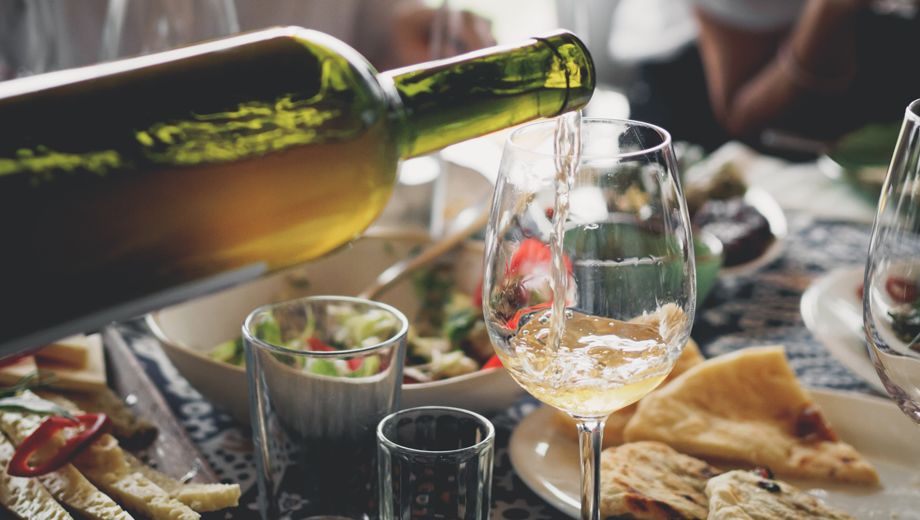The wine business is also a fashion business. Styles are in favour, then out again. After all, it seemed like just a few years ago that we were drinking chardonnay-semillon blends and fortifeds were all the rage. Here’s a quick look at what's tipped to be popular over the coming 12 months.
Rosé revolution
Sales of high-quality pale rosé wines have soared over the past couple of years – and that trend will continue with rosé wines being perfect for the outdoor Australian lifestyle.
Dry rosé wines are both elegant and food friendly. "The Australian climate is brilliantly suited to drink dry, pale, textural rosé wines that are well chilled and slightly savoury," says Steve Webber from De Bortoli Yarra Valley.
Expect to see more rosé wines from Australian producers, and an increasing number of imports from Provence and other regions in the south of France. Also look out for more imported rosé wines from Spain and Portugal.
Spanish breakthrough
Prosecco – sparkling wine from the Veneto in Italy made from the glera grape – has seen increased popularity in Australia for the past couple of years with an ongoing row between Italian producers and Australians for using the name Prosecco.
Industry insiders are signalling, however, that prosecco has reached peak popularity and its spot on the shelves is set to be usurped by cava, Spanish sparkling wine.
Cava is made in Catalonia from the macabeu, parellada and xarello grapes. The Spanish sparkling wine has a huge advantage over its rivals given it can be found for around $15 per bottle. Also look for a growth in sparkling-wine-based cocktails like bellinis, and a surge in interest in refreshing drinks like kir (sparkling wine mixed with crème de cassis).
Japanese accents
It used to be that sake was only found in Japanese restaurants but look for more Japanese rice wines to appear on standard wine lists. Many Australians have travelled to Japan and enjoyed the various styles of sake. Sake now appears on around 40% of all premium wine lists in the UK and it is being championed by sommeliers looking for something different to offer their clients.
There are now several Australian importers of sake, ranging from entry level bottles to premium junmai daiginjo sake. Australia even has its own sake producer (Sun Masamune Sake Brewery) which opened in 2017 in the western Sydney suburb of Penrith.
Lighter and brighter
An increasing number of Australians wine drinkers are moving away from heavily oaked, high-in-alcohol red wines and looking for lighter fruit-driven styles that can be enjoyed chilled over the Australian summer.
Cabernet Franc from the Loire, and increasingly from Australian regions, and Gamay from Beaujolais, are enjoying global popularity. Also look for an increased focus on lesser-known Burgundy appellations, given the price increases of the top pinot-noir producing domains, and on cool-climate Australian pinor noir from Tasmania, and cooler regions in Victoria, including the Yarra, Mornington Peninsula and Bellarine.
A sense of adventure
There is a continuing trend for Australians enjoying grapes from Italy, especially white grape varieties like fiano (from Campania and Sicily) and vermentino (from Sardinia). Also look out for red varieties including Nero d’Avola (originally from Siciiy) and montepulciano (from Abruzzo) as consumers look for more savoury, less weighty red wines.
While you might not be familiar with grapes called touriga nacional, gruner veltliner and aleatico, it is worth remembering that 40 years ago chardonnay was unknown in Australia and we drank an awful lot of wine made from a dull grape called crouchen. Times change quickly!
Vegan fascination
More and more vegans equals more and more vegan-friendly wines; the wine industry tends to follow food trends. So expect to see “vegan-friendly” increasingly highlighted on labels.
But what exactly is a vegan wine? Most wine producers still use fining agents to remove yeast traces and bacteria. These are often derived from animal products including gelatine, casein, bone marrow, egg whites and fish bladders. Alternatives include bentonite clay, silica gel and plant casein, while several adventurous winemakers are abandoning the fining process altogether.


Virgin Australia - Velocity Rewards
19 Jun 2017
Total posts 7
I too am pleased to see that pale rosé is starting to be produced more locally. I'm annoyed by this so-called "vegan wine" though. There's no such thing: every wine out there, "vegan" or not, has a small handful of critters in the mix. Unless every single piece of fruit is manually removed from the vine, washed and handled separately, there's bound to be a bunch of crawling creature carcasses getting pressed along with the grapes. Even more when whole bunches are used.
Hi Guest, join in the discussion on Six wine trends to watch for in 2019